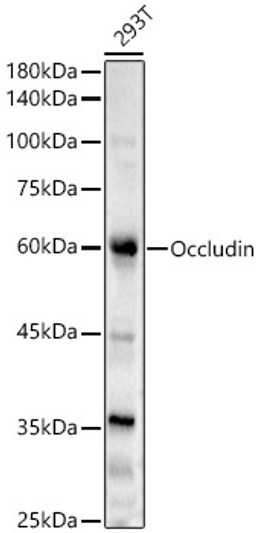| Tissue Specificity | Localized at tight junctions of both epithelial and endothelial cells. Highly expressed in kidney. Not detected in testis. |
| Post Translational Modifications | Dephosphorylated by PTPRJ. The tyrosine phosphorylation on Tyr-398 and Tyr-402 reduces its ability to interact with TJP1. Phosphorylation at Ser-490 also attenuates the interaction with TJP1. (Microbial infection) Cleaved by S.pyogenes SpeB protease.leading to its degradation. Degradation by SpeB promotes bacterial translocation across the host epithelial barrier. |
| Function | May play a role in the formation and regulation of the tight junction (TJ) paracellular permeability barrier. It is able to induce adhesion when expressed in cells lacking tight junctions. (Microbial infection) Acts as a coreceptor for hepatitis C virus (HCV) in hepatocytes. |
| Protein Name | Occludin |
| Database Links | Reactome: R-HSA-351906Reactome: R-HSA-8935964 |
| Cellular Localisation | Cell MembraneMulti-Pass Membrane ProteinCell JunctionTight Junction |
| Alternative Antibody Names | Anti-Occludin antibodyAnti-OCLN antibody |
Information sourced from Uniprot.org









